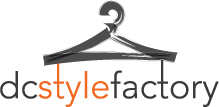Suited Up: Office Style for Millennials
In the late 1990s, I worked at a city magazine with a relatively strict dress code. The mostly female employees — all 20 to 40something — wore hose, heels and suits or formal separates nearly every day. It felt a little like a rehash of “Working Girl”, but in a way, it was nice to have a uniform. The message? Wear that jacket/shirtdress/kitten heel, and you might get a promotion/byline/better job.
Still, on at least one occasion, the boss sent one of the younger sales reps home to change clothes before heading out to an appointment with a client. (The sale rep didn’t like pantyhose, and tended to come to the office bare-armed). I felt bad for her, if a little smug in my black Ann Taylor suit and Hanes tights that, for once, didn’t have a run in them.
Fast-forward a few decades, and the cubicle-chic landscape has changed — especially in creative industries. “In creative fields, it’s important to show your style and personality,” says Herb Heiserman, a managing partner at Bethesda design, real estate and strategy firm Streetsense. “Still, I think it means visible tattoos are fine but Lululemon pants at the office aren’t.”
So how do workers — particularly 20somethings — stylishly climb the ladder without cramping their sartorial sense? “There’s been a loosening of dress codes, sure, but I think it’s always about showing a sense of respect,” says Heather Case, a Virginia-based career coach with Lee Hecht Harrison. “You need to think about whether you’re seeing clients or just sitting at a desk.”
Does everyone woman still need a suit? Not necessarily. “I wear sleeveless dresses on Capitol Hill and can’t remember the last time I wore a suit,” says lobbyist Jessica Killin. “I think guys have it harder, and still have to do a dark suit and a red tie.” And for job interviews in non-creative fields (read, most federal gigs), yep, you’re still probably safest in a matching jacket and pants.
Here are a few rules that still apply:
• Don’t wear flip flops to work, unless you’re a yoga or surf instructor. “No one wants to see your feet, and that flapping noise they make you walk will drive people crazy,” says Page Holland, a human resources manager in Reston.
• Make sure the clothing you wear fits you properly. Nothing worse than a shirt that pulls or exposes. And for a man, an ill-fitting, too-large suit looks sloppy.
• And, if you’ve climbed the ladder a bit, up your style game. “If you’re leading the company, lead by example and wear style-appropriate attire,” says Heiserman. “For guys that might mean interesting socks or a nice tie bar, something to spark interest.”
• No visible bra straps. Ever.
• Sure, you have great legs from all those Soul Cycle classes, but a dress so short people mistake it for a shirt belongs — if anywhere — at brunch on Sunday, not at a meeting on Monday. “It’s not appropriate for your skirt to show too much of your thighs and hamstrings,” says Killin. The long and short of it? You should be able to sit down and not expose yourself, adds Killin.
• Along the same lines, not too much skin. Avoid too much cleavage or any of the crop tops that expose your midsection.
• Yoga pants or athletic wear is a no-no.
Post by DC Style Factory stylist, Jenn Barger. Jenn has more than 15 years of experience working as a fashion and design journalist in the nation’s capitol, including serving as the founding editor in chief of the Washington Post’s FW magazine. Today she works with DC Style Factory clients, injecting polish and personality into their wardrobes. You can read more about her on our website.

